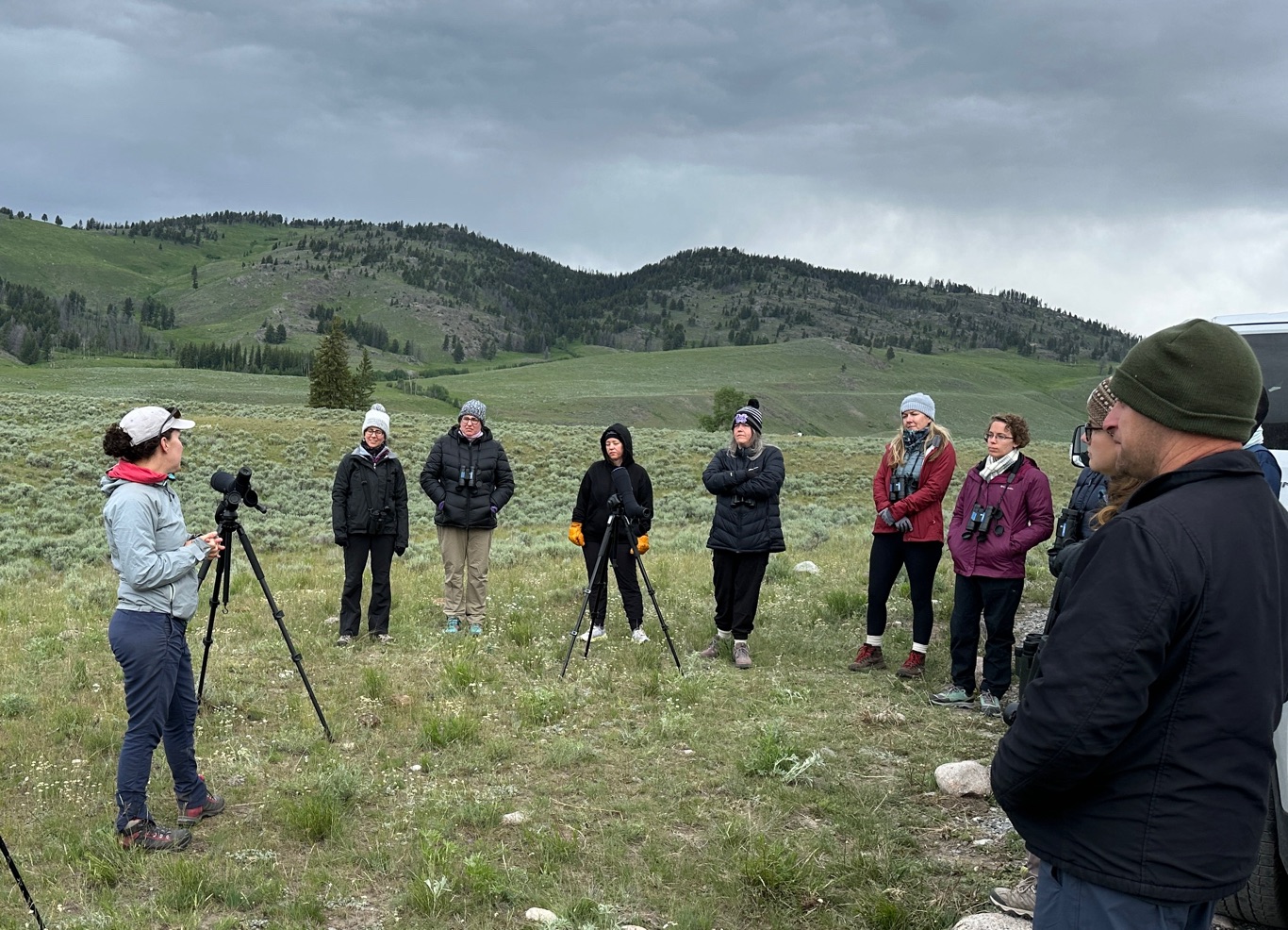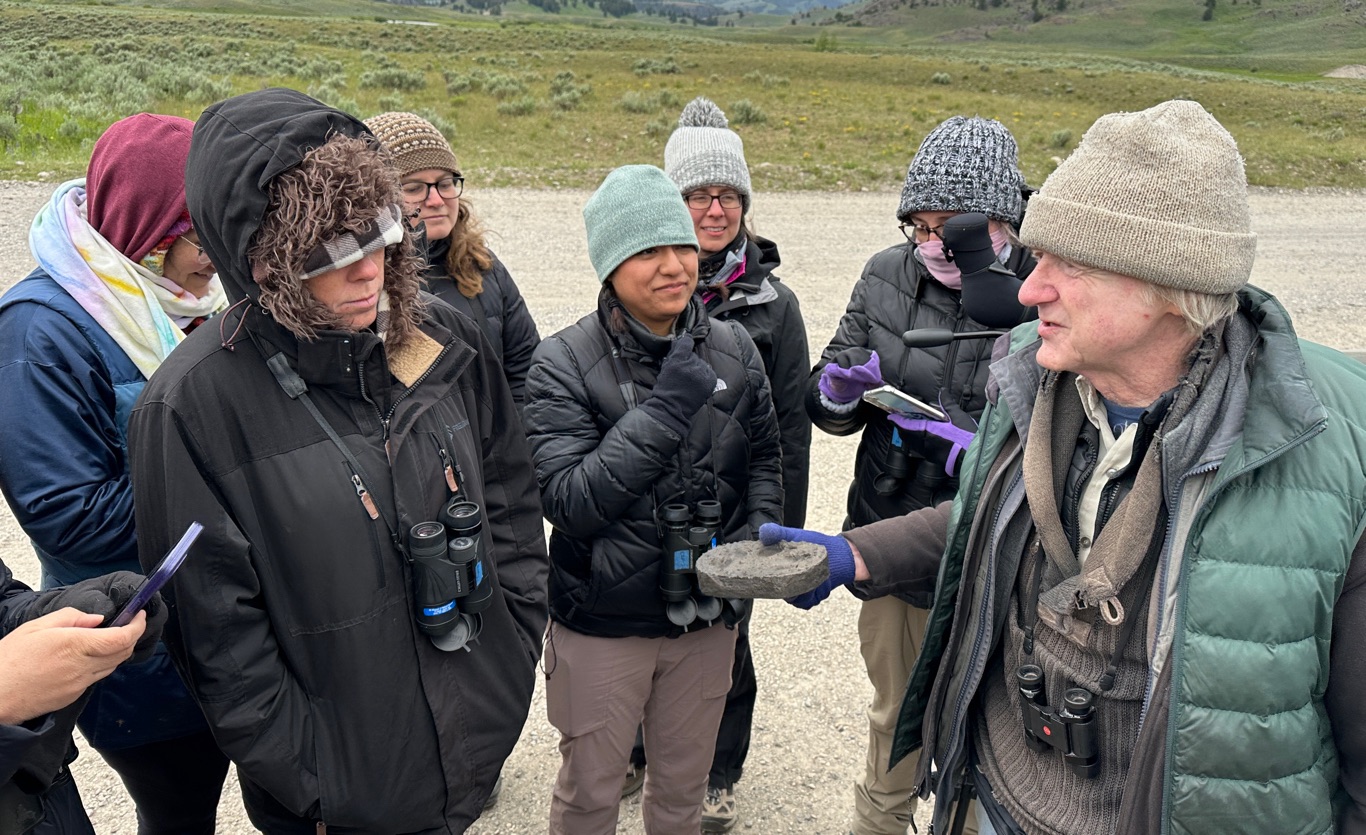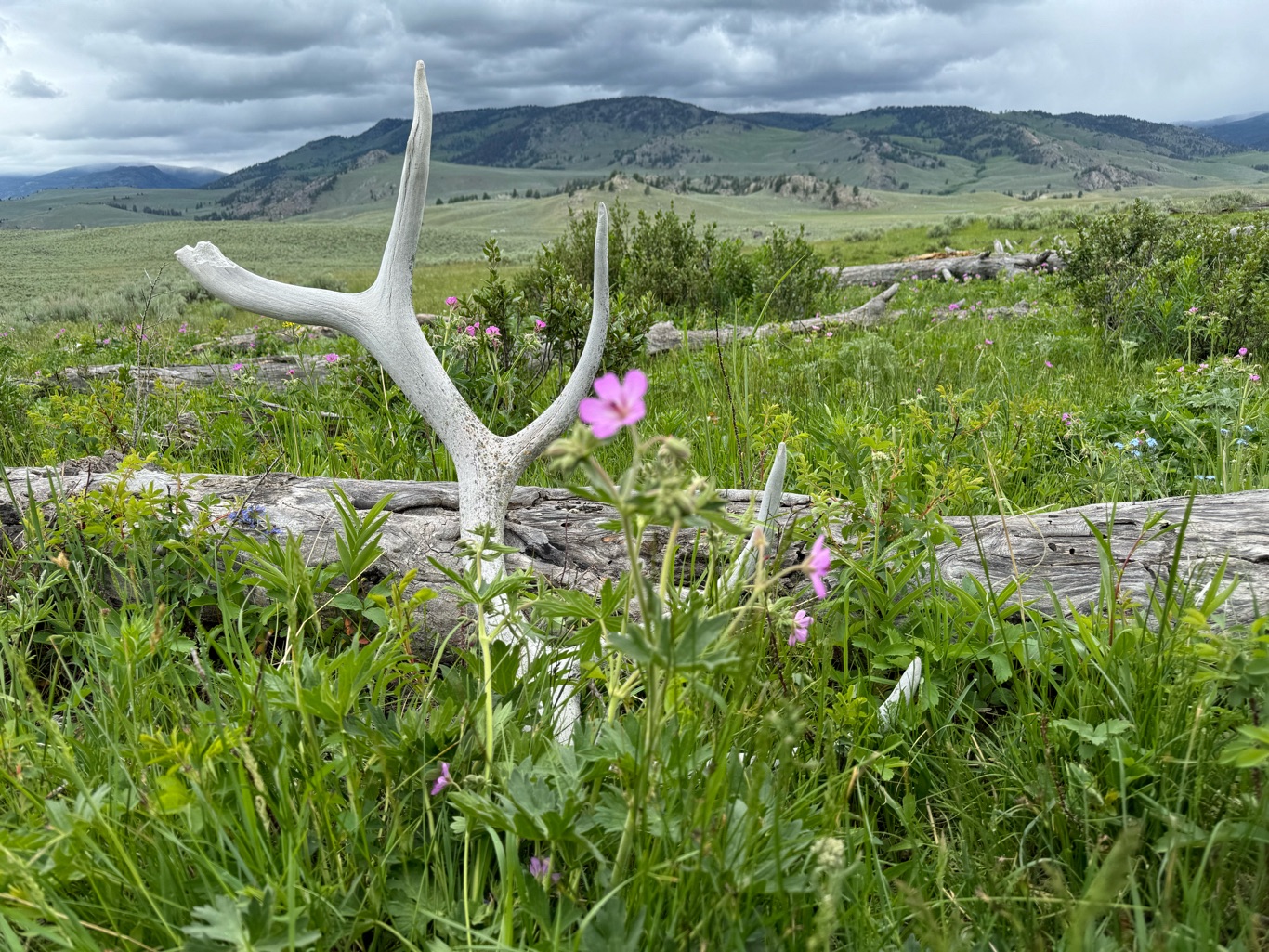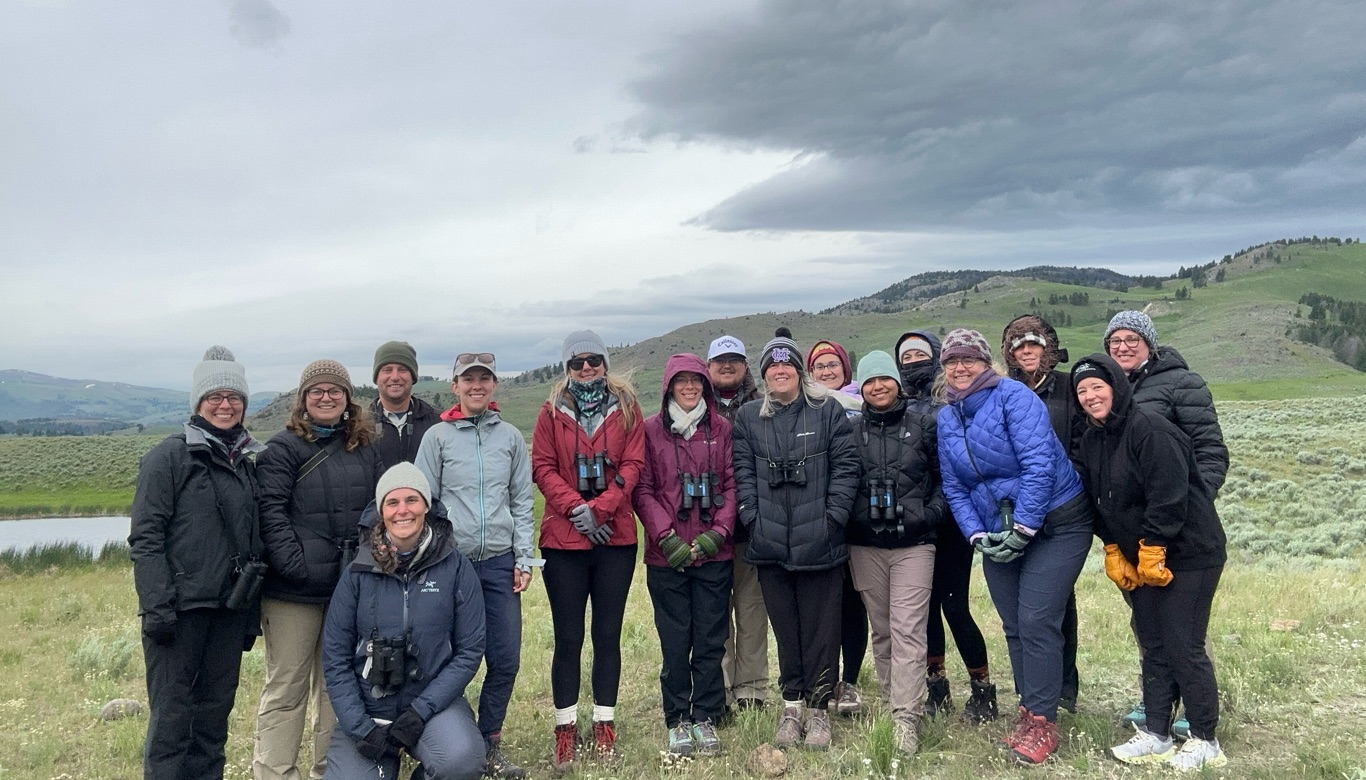In her book The Hour of Land, Terry Tempest Williams writes about the importance of fostering an ecology of awe. On this fourth full day in the park, we continue to be in awe of the scale, the diversity, and the overwhelming beauty of this place.
We started out this morning, once again, in the dark. We headed out by 5:06 to Slough Creek to meet Kira Cassidy, a wolf biologist. On the way, our eyes scanned the meadows and ridges for movements. We’ve all gotten better at telling the difference between a bison and rock, but we still get tricked occasionally.
We got to Slough Creek and saw a bald eagle, a beaver, a pronghorn with her two fawns, and one of the wolves in the distance. Turns out that pronghorn fawn butts are super cute. We headed east into Lamar Valley to the Buffalo Ranch to check on the coyote and her seven pups. They’ve gotten super playful over the last few days and it’s always nice to see them out playing. This morning, they were having a lazy morning, so they were just sleeping in front of their den. But, we did see a grizzly with two cubs playing around up on the ridge.
Once we caught up with Kira back at Slough Creek, we learned all about the wolf reintroduction project that began in 1995. She answered all of our questions and provided us with so much information about how the wolf biologists study the wolves, how the packs behave, and the history of the reintroduction project. A few interesting facts: the wolves in Yellowstone National Park can trace their lineage back 9-10 generations to those original wolves brought here from Alberta, Canada and British Columbia. There have been wolves who have traveled far from the park. A collared wolf made her way down to Colorado and another made their way down to the Grand Canyon. Mike Phillips, who led the reintroduction of the wolves to Yellowstone, also reintroduced Red Wolves to Eastern North Carolina in 1987. Kira said that wolves smell like sage. Kira’s work is a perfect example of the ecology of awe.

After our fairly long visit with Kira, we also got to visit with Rick McIntyre, the scientist and author of 4 books about the wolves of Yellowstone. His wry sense of humor, coupled with his extensive knowledge of the wolves, made for a fascinating conversation. When we asked if he had ever missed a day watching the wolves, he smiled and asked “Why would I?”. Rick’s longest stretch of never missing a day is 15 years!
He told us about 907, the oldest living wolf in the park. We were standing down the hills from her den and have had the pleasure of watching her every day. She’s 11, which is approximately 86 in human years, and had three pups this season. His next book, Think Like a Wolf, is about 907. He also showed us the paw print of wolf 21, a wolf who he said died of a broken heart after his mate, 42 died. That he knows these wolves so intimately gave us all a deeper appreciation of the animals we have been seeing during our time here. Many of us decided that we’d like to have Rick as one of our “Who would you invite to dinner” person. As we said goodbye, he advised us all to heed the words of John Potter, an indigenous wolf expert, who, in the afterward to one of Rick’s books, writes “don’t just learn about wolves, learn from them.” This seems like another way of fostering an ecology of awe.

After our conversation with Rick came to an end, we headed toward an abandoned wolf den. The walk there led us through Sage meadows and we all understood what Kira meant when she said that wolves smell like Sage. Along the way to the den, we found two pile of bones that visitors before us had piled near each other for easy spotting. We were all thrilled to hold and investigate the bones that had been bleached white by the sun and that reminded us of the size and power of the bison and elk. The den was just inside the tree line; while it had collapsed considerably since last use, we would all see why that location was chosen. On the way back, we found a 6×6 intact Elk rack along with other antler pieces. The rather heavy rack provided a great photo op.

After lunch, we headed out into a meadow to search for the remains of a baby bison that Melissa had seen last week alone in the field. We found another recent bison carcass nearby, first and then his carcass. We suspect that perhaps his mother died, and he was unable to make it on his own. While we looked at the remains, we stood in silence in awe and respect for their lives.

We have really enjoyed sharing our scopes, knowledge, and enthusiasm with other park visitors. We’ve had lots of people say things like “oh, you’re teachers, no wonder you’re all so helpful and enthusiastic; thanks for all that you do”. It’s been a joyous day of awe and we still have 4 full days and one morning in the park.

